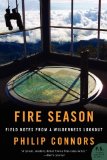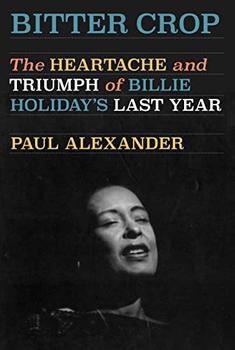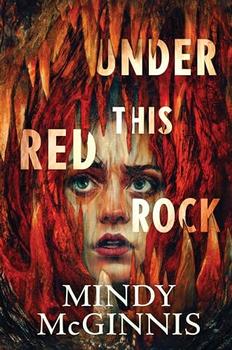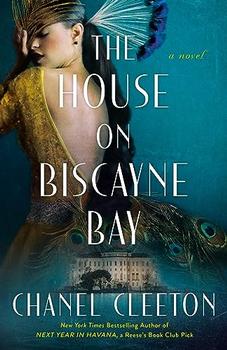Summary | Excerpt | Reviews | Beyond the Book | Readalikes | Genres & Themes | Author Bio

Critics' Opinion:
Readers' Opinion:
First Published:
Apr 2011, 256 pages
Paperback:
Feb 2012, 288 pages
 Book Reviewed by:
Book Reviewed by:
Jo Perry
Buy This Book
A Talent for Sloth
The landscape where I work, in far southwest New Mexico, is one of the most fire-prone areas in America. I look out over a stretch of country with nearly a million acres of roadless wilderness, where an annual upsurge of moisture from the Gulf of Mexico combines with the summertime heat of the Chihuahuan Desert to create tens of thousands of lightning strikes. In an arid land with brief but intense storm activity, wildfire is no aberration.
My lookout tower is situated five miles from the nearest road, on a ten-thousand-foot peak in the Gila National Forest. I live here for several months each year, without electricity or running water. Although tens of thousands of acres are touched by fire here every year, I can go weeks without seeing a twist of smoke. During these lulls I simply watch and wait, my eyes becoming ever more intimate with an ecological transition zone encompassing dry grasslands, piñon-juniper foothills, ponderosa parkland, and spruce-fir high country. On clear days I can make out mountains 180 miles away. To the east extends the valley of the Rio Grande, cradled by the desert: austere, forbidding, dotted with creosote shrubs and home to a collection of horned and thorned species evolved to live in a land of little water. To the north and south, along the Black Range, a line of peaks rises and falls in timbered waves; to the west, the Rio Mimbres meanders out of the mountains, its lower valley verdant with riparian flora. Beyond it rise more mesas and mountains: the Diablos, the Jerkies, the Mogollons.
It is a world of extremes. Having spent each fire season for nearly a decade in my little glass-walled perch, I've become acquainted with the look and feel of the border highlands each week of each month, from April through August: the brutal gales of spring, when a roar off the desert gusts over seventy miles an hour and the occasional snow squall turns my peak white; the dawning of summer in late May, when the wind abates and the aphids hatch and ladybugs emerge in great clouds from their hibernation; the fires of June, when dry lightning connects with the hills, sparking smokes that fill the air with the sweet smell of burning pine; the tremendous storms of July, when the thunder makes me flinch as if from the threat of a punch; and the blessed indolence of August, when the meadows bloom with wildflowers and the creeks run again, the rains having turned my world a dozen different shades of green. I've seen fires burn so hot they made their own weather; I've watched deer and elk frolic in the meadow below me and pine trees explode in a blue ball of smoke. If there's a better job anywhere on the planet, I'd like to know about it.
The work has changed remarkably little over the course of the past century, except in its increasing scarcity. Ninety percent of American lookout towers have been decommissioned, and only around five hundred of us remain, mostly in the West. Nonetheless, when the last lookout tower is retired, our stories will live on. Jack Kerouac worked a summer on Desolation Peak in the North Cascades, in 1956, an experience he mined for parts of two novels, The Dharma Bums and Desolation Angels. He secured the job through a recommendation by his friend the poet Gary Snyder, who worked summers on two different lookouts in the same national forest and wrote several fine poems about that world, "up there above the clouds memorizing various peaks and watersheds." During the '60s and '70s, that old raconteur Edward Abbey worked at various postings, from Glacier National Park to the Grand Canyon. He wrote two essays on the subject and made a fire lookout the main character in his novel Black Sun, the book he claimed he loved most among all his works. And Norman Maclean, in his great book A River Runs Through It, wrote a lightly fictionalized story about his one summer as a lookout on the Selway Forest in northern Idaho, over the Bitterroot Divide from his home in Missoula.
Excerpted from Fire Season by Philip Connors. Copyright © 2011 by Philip Connors. Excerpted by permission of Ecco. All rights reserved. No part of this excerpt may be reproduced or reprinted without permission in writing from the publisher.





The House on Biscayne Bay
by Chanel Cleeton
As death stalks a gothic mansion in Miami, the lives of two women intertwine as the past and present collide.

The Flower Sisters
by Michelle Collins Anderson
From the new Fannie Flagg of the Ozarks, a richly-woven story of family, forgiveness, and reinvention.

The Funeral Cryer by Wenyan Lu
Debut novelist Wenyan Lu brings us this witty yet profound story about one woman's midlife reawakening in contemporary rural China.
Your guide toexceptional books
BookBrowse seeks out and recommends the best in contemporary fiction and nonfiction—books that not only engage and entertain but also deepen our understanding of ourselves and the world around us.